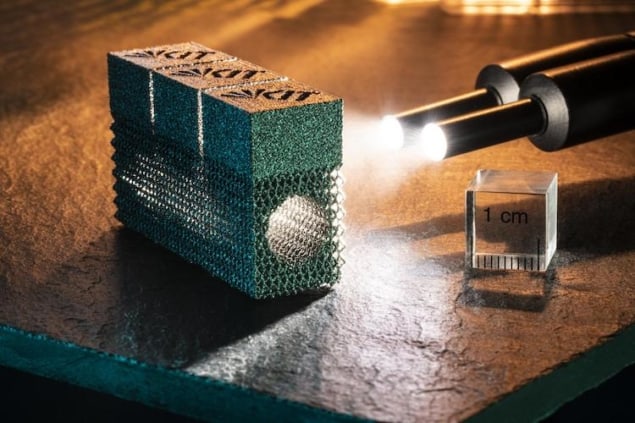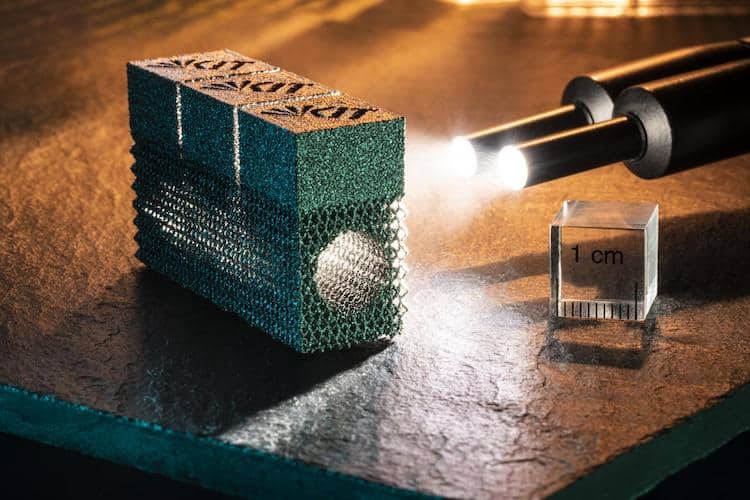
Tungsten has many excellent properties. It resists corrosion, and its melting point of 3422 °C is the highest of all metals, making it an ideal material for components that operate at extreme temperatures. There is a problem, though: it is highly brittle at room temperature, which means it is hard to process using conventional techniques.
Researchers at the Karlsruhe Institute of Technology (KIT) in Germany have now addressed this problem by adapting an additive manufacturing technique called electron beam melting (EBM) for use in tungsten processing. The resulting crack-free metal could be used in high-temperature components such as rocket nozzles, heating elements for furnaces, or parts for fusion reactors and medical imaging systems.
Additive manufacture
The KIT researchers, led by Steffen Antusch from the Institute for Applied Materials – Materials Science and Engineering (IAM-WK), have studied several ways of using additive manufacturing (also known as 3D printing) to make tungsten components that require little to no post-production processing. In their latest work, they used EBM to reduce strain in tungsten during processing and thus produce a soft material with no cracks that is easier to handle.
The EBM technique uses electrons accelerated in a vacuum to melt metal powder. By moving the electron beam, it is possible to produce a 3D component from the metal in an additive way – that is, layer-by-layer. The technique was originally developed for titanium alloys and materials requiring high processing temperatures.
Pre-heating reduces deformation and inherent stress
To create 3D-printed parts from tungsten instead, Antusch and colleagues used the electron beam in the EBM machine to pre-heat the tungsten metal powder before melting it. The researchers explain that this pre-heating procedure reduces deformation and inherent stress in the metal, making it possible to process materials that break easily at room temperature but can be deformed when hot.

3D printing mimics crystal microstructures to inspire stronger materials
Compared to other techniques, such as laser printing, the new approach is much better at producing crack-free tungsten, Antusch tells Physics World. And unlike powder injection moulding — another widely-employed advanced manufacturing technology for fabricating complex, high volume net-shape components – Antusch notes that with the new method “you don’t need expensive tools and are free to design the printed parts”.
The IAM-WK researchers are involved in work for the Helmholtz Association and the European Fusion Programme (EUROfusion), with the long-term goal of developing materials and processes for high-temperature applications in fusion energy and medical engineering (such as making parts for CT scanners). They now plan to characterize and test the mechanical properties of their printed tungsten materials for use in such applications.
